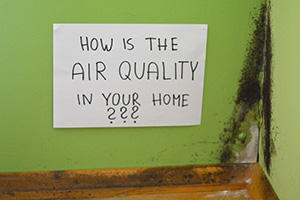
Posting Date: April 14, 2016
Posted by: John Barbato, Manager, Daytona
Part 1 of a 2-part series on mold in your home.
You probably filter the water you drink at home. But how about the air you breathe?
The fact is, you “drink” far more air than water in a day – about 15,000 quarts, compared to 2-3 quarts of water on average.
The problem is, most of those 15,000 quarts of air is coming from indoor HVAC systems that provide moisture and cool air – making them a perfect breeding ground for mold growth.
Without treatment mold can spread through the air in your home and cause all kinds of health issues – from watery eyes and allergies to asthma and more serious problems.
Know the warning signs of mold
To stay on top of a mold problem in your home, you need to understand the warning signs of mold growth. Specifically, you need to:
- Use your eyes – Routinely inspect your ductwork, evaporator coils, and HVAC drip pans for mold, along with anywhere else water or condensation accumulates.
- Follow your nose – If you smell mildew in your ductwork, turn off your HVAC system, wait 15 minutes, and turn it back on. If the smell disappears or weakens when your system is off and comes back when you turn it back on, you may have a mold problem.
Other things you can do
- If you don’t see or smell mold, you probably don’t have a mold problem. But if you want to be certain, have your system professionally tested. Never try to clean up a mold problem yourself! Contact Broward to learn more.
- If budget allows, consider installing an ultraviolet (UV) germicidal filter system, which can kill up to 99.9% of all airborne mold spores (the filters are so effective that hospitals, laboratories, and commercial kitchens use similar units). Contact Broward today for a FREE estimate on a UV germicidal system for your home.
Knowing the early signs of mold can really protect your family – but the best way to keep everyone healthy is to prevent mold from spreading in the first place. More on that in Part II: Preventing Mold in Your Home, coming soon!
